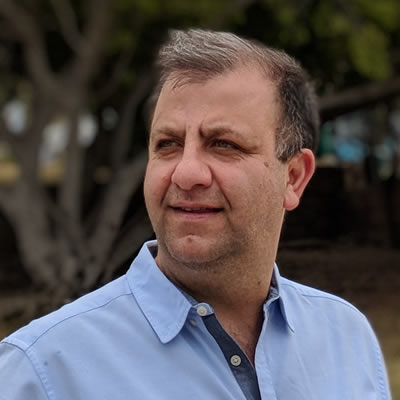Artificial intelligence solves mining challenges

Based in Vancouver, B.C., Shahram Tafazoli is president of Motion Metrics International Corp. — Photo courtesy Motion Metrics Shahram Tafazoli, pre
Based in Vancouver, B.C., Shahram Tafazoli is president of Motion Metrics International Corp. — Photo courtesy Motion Metrics
Shahram Tafazoli, president and CEO of Motion Metrics International Corp., founded his company as a consulting firm in 1999. It has since grown to an innovative, made-in-Canada, technology provider for mining and quarry operations worldwide. The technology applies software algorithms to rugged imaging and motion sensors installed on the large equipment employed primarily in open pit and hard rock mines. In short, its products increase efficiency, safety and productivity of the operations.
Motion Metrics focuses on three products that are one-time-sale hardware and one product that is subscription- and cloud-based software. ShovelMetrics is a monitoring solution for shovels and excavators that addresses challenges like missing tooth detection, digital blind spot viewing, tooth wear monitoring and in-bucket rock fragmentation analysis on board large mining shovels and excavators. LoaderMetrics solves the challenge of missing teeth and blind spots for wheel loaders. PortaMetrics is a hand-held 3-D imaging tablet that offers fast and accurate rock fragmentation analysis to clients. This technology is particularly useful for blast specialists.
MetricsManager Pro is a subscription-based cloud computing software that Motion Metrics updates regularly. This cloud-based platform collects and displays data from Motion Metrics-embedded products and makes this data available to the client.
Many of the largest mines in the world are Motion Metrics customers today. The company’s recent growth is partially due to application of artificial intelligence (AI) and more specifically “deep learning” within its technology. “Our investment in AI has grown in our company. LoaderMetrics was our first AI-based product,” said Tafazoli. “We have now brought deep learning to all of our products and we are essentially an applied AI based company for tough mining challenges. Today, AI defines us.”
The introduction of deep learning to its products has created new opportunities for Motion Metrics. “Thanks to AI and improved engineering, we are starting to capture a market we previously had challenges with,” he said. That includes oilsands in Alberta. “The last few months have been an opening in the oilsands for us.”
Motion Metrics had tried to work with oilsands mines in the past, but didn’t see as much success as they would have liked because of a few challenges. “Oilsands are a bit different type of mining. It’s an overlap of mining and oil so the culture is a bit different,” Tafazoli said. The winter freeze can cause similar problems that occur in hard rock mining, like tooth breakages. “We get more inquiries from oilsands mining in the winter because they have teeth in crushers or on their conveyor belts, which is dangerous and costly.”
Another challenge is that oilsands mining operations are dealing with an extremely sticky and abrasive material. “It sticks between the teeth, so a regular camera-based system can be a challenge,” he said. At the same time, the teeth on the shovels can wear out quicker than in other types of mining operations. These pose challenges to missing tooth detection and to tooth wear monitoring functions.
Motion Metrics had to solve these problems for its products to be effective in the industry. “We modified the hardware,” Tafazoli said. For example, the company swapped the regular cameras to rugged thermal cameras and worked to improve the system performance using AI. “That means we designed and developed the deep learning networks and manually labelled a large set of bucket images,” he said. The positive reaction has been growth in previously untapped markets.
Mining companies can benefit from Motion Metrics’ products. “Some education is important in terms of who benefits from our product,” Tafazoli said. “For example, with rock fragmentation sensing, the product is on the shovel, but the main beneficiary is the processing plant.” However, companies understand the large-scale benefits of implementing this technology.
As a technology-based company, Motion Metrics is always looking for the next step. “We have some ambitious plans for the near future,” said Tafazoli. The company’s innovators are already working on expanding the metrics products line to include new applications in new industries. “We are now conducting field testing of our new BeltMetrics product, which applies rugged 3-D imaging on top of conveyor belts to sense rock sizes,” Tafazoli said. They are also looking at building effective autonomous shovels.
“On the crazy side, we are looking into space mining,” he said. On a global scale, the next race is for space mining. As far as Tafazoli knows, Canada has given the opportunity little to no attention. “Today, space mining is just a concept and we see space agencies around the world conducting small-scale sample collections from the moon and asteroids, but we are trying to see how we can be included in that, given the terrestrial experience we have had at earthly mines. We are finding a good overlap of what we have done and what can be useful in space mining.” This initiative is just in the learning phase but is definitely on the horizons with the increased applications of AI.



